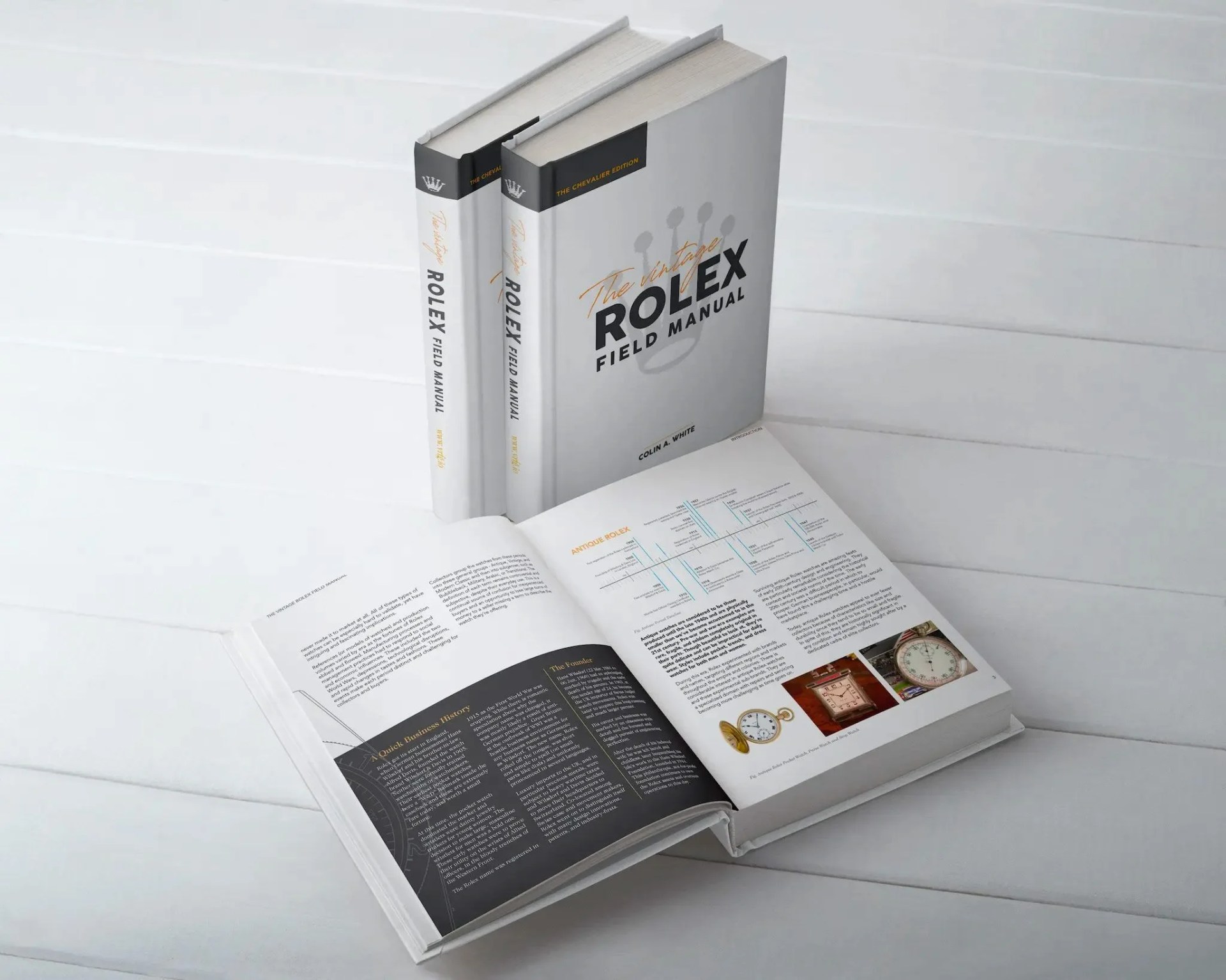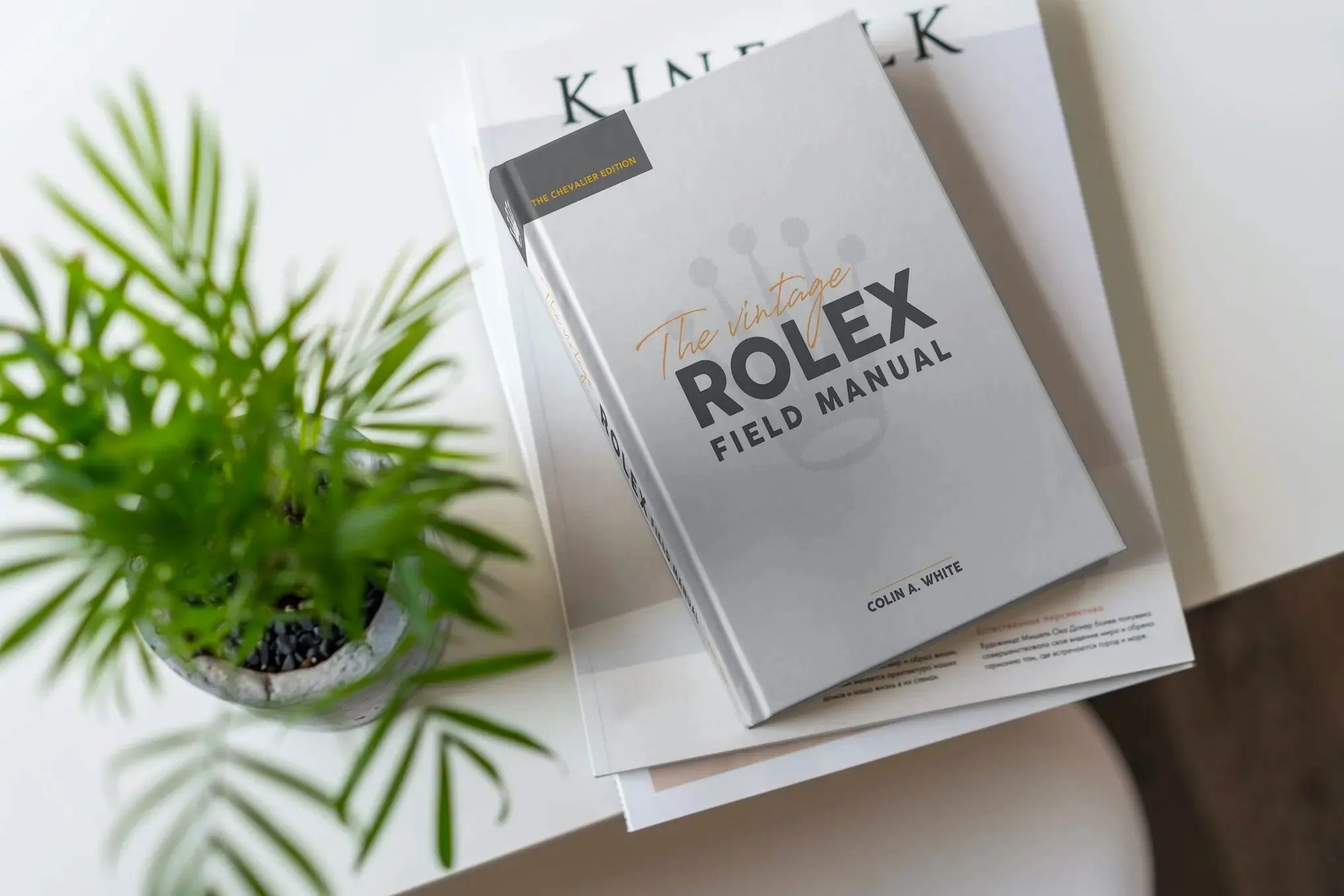Last year, I reviewed a book called The Vintage Rolex Field Guide, which has to be one of the best buys in vintage watch education. A $45 paperback (or a $10 e-book), it’s packed to the gills with information on just about every possible nuanced, esoteric angle of vintage Rolex collecting — itself already an incredible nuanced, esoteric pastime. Movement and reference charts, photographs, historical information, market commentary: it’s all there, presented in an informative, down-to-earth way that renders the information accesssible to someone who hasn’t delved deep into Rolexian waters before.
Which begs the question: why did the author choose to release a new, “Chevalier” edition of the book so soon after the debut of the original? This edition, which I’ve been eagerly consuming for the past few days, is a hardbound, 2-lb. coffee table-type book — much more elegant than the original paperback edition, and something that you’d proudly display in your home. But what as to the contents?
The author, Colin A. White, had this to say: “The first Field Guide is a stripped-down, lightweight thing you might take to a watch fair or an auction. You wouldn’t feel bad about writing in the margins and even throwing it away once you’ve found what you’re looking for. It was designed to be a cross between a Lonely Planet City Guide and a Boy Scout Wilderness Survival Manual.
 Vintage Rolex Field Manual
Vintage Rolex Field ManualThe Chevalier Edition is more of a desk reference. It’s not a glossy coffee-table book but a reference you’ll want to keep around. Pictures were chosen specifically to reflect what’s circulating in the market and crossing watchmakers’ benches. There’s no wrist-porn of museum-grade exotica — pieces average Joes like me will never encounter, let alone be able to buy and wear. There’s also a more history and insight into some of the young up-and-comers making a name for themselves in the vintage markets. Much of the content (specifically the data) overlaps, but they’re for different use cases.”
Makes sense, although I would (and did) make the argument that the Chevalier Edition is definitely pretty enough to keep on your coffee table. Notably, an entire section has been added that details Rolex watches worn and utilized by men in professional aviation and spaceflight, complete with black-and-white and color photography, charts, timelines and more. The comprehensiveness of the information is staggering, and enough to keep even the most pedantic of watch nerds (which describes a healthy cross-section of us) busy during quarantine and beyond.
Notably, both the earlier Field Guide and the newer Field Manual choose not to focus on blue-chip, “f.u. money” Rolexes, but concentrate instead on more garden variety references. Of course there’s plenty of information about “double red” Sea Dwellers, Bao Dai-dial 6062s and pre-Daytonas — you could indeed learn most of what you need to know about these watches from the book alone — but the chief focus is, by design, on watches that the average collector can actually afford to buy. We’re talking Oysterdates, Oyster Perpetuals, Air Kings, Submariners, Explorer IIs, Subs, etc. Everything is covered, from early wristlets through modern watches, but the idea is to establish a base of knowledge through which the collector who doesn’t have a million dollars to spend on a watch can educate himself or herself in order to make an informed purchase. (Thankfully, of course, the “garden-variety Rolex” is a hell of a watch.)
